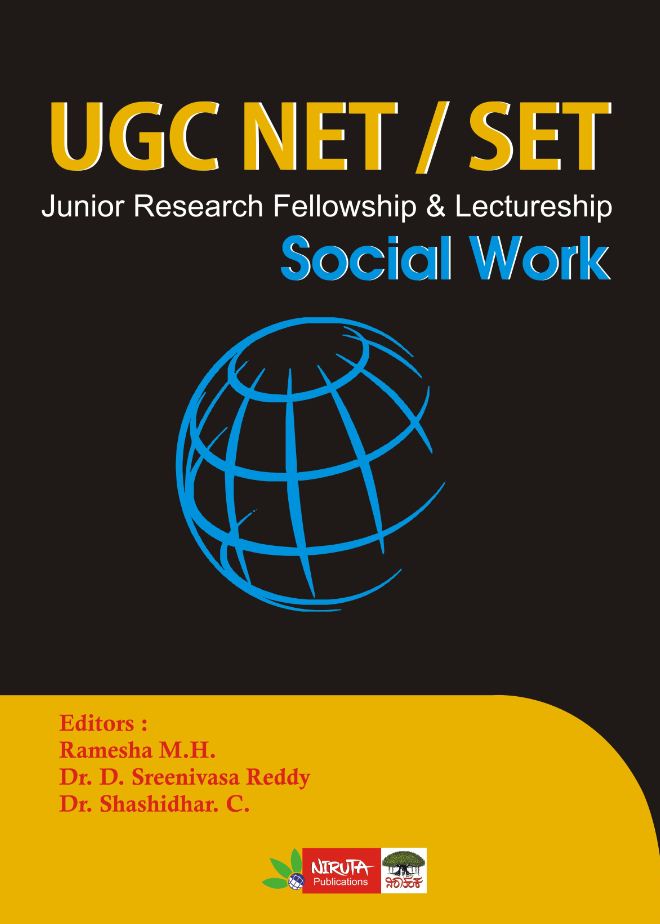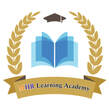|
Note : This paper contains seventy five (75) objectives type questions, each question carrying two (2) marks. All questions are compulsory. 1. Classical conditioning technique used to eliminate phobias, is used in (A) Generalization (B) Operant conditioning (C) Spontaneous recovery (D) Systematic desensitization 2. Put the following events in the order of their occurrence : i. Charity organization society (London) ii. Publication of a book on social case work iii. Charity organization society (USA) iv. Emergence of Freudian theory Codes : (A) i iii ii iv (B) iv ii i iii (C) i iv ii iii (D) iii iv ii i 3. Arrange the following steps in the process of establishment of NGOs in a sequence :
i. Mission ii. Vision iii. Strategies iv. Objectives Codes : (A) i ii iv iii (B) i ii iii iv (C) ii i iii iv (D) ii i iv iii 4. What is the proper sequence of the following ? i. Members of similar age-group available with interest in recreational activities ii. Group becomes cohesive and goals achieved iii. Group goals are identified and clearly stated iv. Programme planned and carried out Codes : (A) iii iv ii i (B) i iii iv ii (C) i ii iii iv (D) ii I iv iii 5. Match items given in List – I with those in list – II by selecting the correct code given below : List – I (Author) List – II (Book) a. Caplan, G (9161) i. A Theory of Human Motivation b. Douglas T. (1993) ii. Common Human Needs c. Maslow, A. (1943) iii. A Community Approch to mental health d. Towle, Charlotte (1945) iv. A Theory of Group Work Practice Codes : a b c d (A) ii i iv iii (B) iii ii i iv (C) iv iii ii i (D) iii iv i ii 6. Following are the steps of social research. Arrange the steps to prepare a plan of research study : (a) Data collection (b) Hypothesis (c) Problem formulation (d) Objectives (e) Processing and analysis of data (f) Report writing Codes : (A) (a) (c) (b) (d) (e) (f) (B) (b) (c) (a) (d) (e) (f) (C) (d) (c) (b) (a) (e) (f) (D) (c) (d) (b) (a) (e) (f) 7. Match the items of list – I with items of List – II : a. Monogamy i. More than one wife b. Polygamy ii. Perfect relationship and living together c. Consensual union iii. Some earlier wives d. Serial monogamy iv. One and only wife Codes : a b c d (A) iv i ii iii (B) i ii i ii (C) iv iii i ii (D) iv i iii ii 8. Match items in List – I with List – II and choose the correct answer from the codes given below : List – I List – II a. Transference i. Law b. Parole ii. Sociology c. Cultural lag iii. Psychiatry d. Award iv. Criminology Codes : a b c d (A) iii i iv ii (B) ii iii i iv (C) iii iv ii i (D) i ii iii iv 9.Match the following : List – I List – II a. Jane Adams i. Methods of social work b. Johari Window ii. Problem-solving model c. H.H Perlman iii. Social Diagnosis d. Mary Richmond iv. Known to others : unknown to self Codes : a b c d (A) i iv ii iii (B) i iv iii ii (C) ii i iii iv (D) iv iii ii i 10. Match the following : List – I List – II a. Probation Department i. Rehabilitation of offender b. Parole ii. Juvenile Justice c. Vocational Training iii. District Court d. Child Welfare Committee iv. Reward for good conduct Codes : a b c d (A) i ii iii iv (B) iii iv i ii (C) iv i ii iii (D) ii iii iv i 11. Match the following : List – I (Events) List – II (Date of Observance) a. World Day of Water i. 1939 b. Child Marriage Restraint Act ii. July 11th c. World Environment Day iii. March 22nd d. World Population Day iv. April 22nd Codes : a b c d (A) ii iii I iv (B) iii I ii iv (C) iv ii I iii (D) iii iv I ii 12. Match the following : List – I (Item) List – II (Act) a. Works Committee i. Payment of Gratuity Act b. Set on and Set off ii. Industrial Disputes Act c. Continuous service iii. Standing orders d. Subsistence iv. Payment of Bonus Act v. Factories Act Codes : a b c d (A) ii iv iii v (B) ii iv i iii (C) iii ii v i (D) v iii iv ii 13. Match the items of List – I with items of List – II : List – I List – II a. Dissolution of Muslim Marriage Act i. 1939 b. Child Marriage Restraint Act ii. 1955 c. Dowry Prohibition Act iii. 1961 d. Hindu Marriage Act iv. 1929 Codes : a b c d (A) i iv iii ii (B) i iii iv ii (C) iii iv ii i (D) i ii iii iv 14. Assertion (A) : Socialization is a life long process. Reason (R) : Socialization process ends with one’s death. Codes : (A) Both (A) And (R) are true. (B) (A) is true and (R) is not true (C) (A) is not true and (R) is not the correct explanation of (A) (D) Both (A) and (R) are not true 15. Assertion (A) : Position of labour welfare officer is only ornamental but not practical Reason (R) : Right person for right job is a prerequisite. Codes : (A) (A) is true, but (R) is not true. (B) (A) is not true, but (R) is true (C) (A) is true, but (R) is not the correct explanation of (A) (D) (A) and (R) are not true. 16. Assertion (A) : Participation in SHGs leads to women’s empowerment. Reason (R) : Through participation in SHGs women improve their self-image, make better choices and enhance their financial status. Codes : (A) Both (A) and (R) are true. (B) Both (A) and (R) are false (C) (A) is true, but (R) is not the correct explanation of (A) (D) (A) is true and (R) is the correct explanation of (A). 17. Assertion (A) : Workers participation in industry result in industrial democracy. Reason (R) : Workers education program does not encourage the participation of workers. Codes : (A) Both (A) and (R) are true. (B) Both (A) and (R) are not true (C) (A) is true and (R) is not the true explanation of (A). (D) (A) is true and (R) is the true explanation of (A) 18. Assertion (A) : Right to self determination is a principle of social work. Reason (R) : In social work practice the client is given free hand to decide about his/her future. Codes : (A) Both (A) and (R) are true and (R) is correct explanation of (A) (B) Both (A) and (R) are true, but (R) is not the correct explanation of (A). (C) (A) is true, but (R) is false. (D) (R) is true, but (A) is false 19. Assertion (A) : Females have higher life expectancy than males. Reason (R) : Females receive a better diet. Codes : (A) Both (A) and (R) are true and (R) is the correct explanation of (A). (B) Both (A) and (R) are true, but (R) is not the correct explanation of (A) (C) (A) is true, but (R) is false (D) Both (A) and (R) are false 20. Consider the following statements and select your answer according to the codes given below: Assertion (A) : Peoples participation is essential for the success of the development programme. Reason (R) : Education and Awareness lead to participation. Codes : (A) Both (A) and (R) are true and (R) is the correct explanation of (A) (B) Both (A) and (R) are true and (R) is not correct explanation of (A) (C) (A) is true and (R) is false (D) (A) is false, but (R) is true 21. Assertion (A) : The connection between industrialization and breakdown of joint family system needs to be studied Reason (R) : This calls for variety of researches to be carried out in rural areas alone. Codes : (A) Both (A) and (R) are true (B) Both (A) and (R) are not true (C) (A) is true and (R) is not the correct explanation of (A) (D) (A) is not true and (R) is true 22. Assertion (A) : Social action is a systematic and conscious effort to influence the basic social conditions for social progress. Reason (R) It involves improving social legislative and social policies. Codes : (A) Both (A) and (R) are true (B) (A) is true and (R) is the correct explanation of (A) (C) (A) is not true and (R) is true. (D) (A) is true and (R) is not the correct explanation of (R) 23. Assertion (A) : Psychologists generally agree that Intelligence Quotient (I.Q.) gets affected by environment. Reason (R) : Intelligence Quotient (I.Q) is a biological trait and it cannot be changed Codes : (A) Both (A) and (R) are true (B) Both (A) and (R) are not true (C) (A) is true and (R) is not true (D) (A) is true and (R) is the correct explanation of (A). 24. Assertion (A) : Jan Shikshan Sansthan provides vocational training courses to the marginalized. Reason (R) : Vocational training empowers the beneficiaries who become entrepreneurs. Codes : (A) Both (A) and (R) are not true (B) Both (A) and (R) are true and (R) is the correct explanation of (A) (C) (A) is true and (R) is not the correct explanation of (A) (D) (A) is not true and (R) is true. 25. Assertion (A) : Crime rate in India is increasing day-by-day. Reason (R) : Crime rate is increasing because people lack skills and use illegitimate means to achieve their goals. Codes : (A) Both (A) and (R) are true. (B) (A) is not true and (R) is the explanation of (A) (C) Both (A) and (R) are not true (D) (A) is true and (R) is not the correct explanation of (A). 26. Assertion (A) : For effective management of a children’s residential home, the staff should be affectionate and friendly. Reason (R) : Regular funding is essential to proper functioning of a residential home for children. Codes : (A) Both (A) and (R) are true. (B) (A) is true and (R) is not true. (C) Both (A) and (R) are not true (D) (A) is true and (R) is the correct explanation of (A). 27. Arrange the following Acts in order in which they were enacted. And select the correct answer using the codes given below : i. Payment of Wages Act ii. payment of Gratuity Act iii. Minimum Wages Act iv. Payment of Bonus Act Codes : (A) iii i iv ii (B) i iv ii iii (C) ii iv iii i (D) I iii iv ii 28. Behaviour that is contrary to the standards of conduct or social expectations of a group or society, is defined by (A) Elliot and Merill (B) Fuller and Myers (C) Louise Weston (D) Ogburne 29. One of the following theories propounds childhood experiences influence the adult behaviour : (A) Person-Centred theory (B) Behaviour modification theory (C) Psychoanalytic theory (D) Existential theory 30. A declarative statement of relationship between or among variables is called (A) Concept (B) Value (C) Hypothesis (D) None of the above 31. The extent of difference between population parameters and the sample statistic is called (A) Sampling error (B) Statistic (C) Sampling bias (D) None of the above 32. Quartile deviation is also known as (A) Range (B) Mode (C) Semi-inter quartile range (D) None of these 33. The time interval between invasion by an infectious agent and appearance of first sign or symptom of the disease in question is called (A) Quarantine (B) Inoculation (C) Incubation period (D) None of the above 34. Find the mode of following marks obtained by 10 students : 10, 6, 11, 8, 9, 11, 7, 11, 12, and 10 (A) 12 (B) 8.5 (C) 11 (D) None of the above 35. Quota sampling is the method of (A) Non-probability sampling (B) Area sampling (C) Simple random sampling (D) The lottery method 36. Emotional insulation is (A) covering himself from physical threats (B) involves the justification for inappropriate behaviour (C) a maneuver aimed at withholding an emotional investment in a desired but unlikely outcome (D) involves the use of abstractions as a way of avoiding feelings and distancing one’s self from emotional pain. 37. Cone of the layers protecting environment from ultraviolet rays is (i) Ozone (ii) Ionosphere (iii) Stratosphere (iv) Troposphere Codes : (A) Only (i) is correct. (B) (ii) and (iii) are correct (C) (iii) and (iv) are correct (D) None of them is correct. 38. Which of the following is not an ascribed status? (A) Age (B) Caste (C) Sex (D) Knowledge 39. Skewness tells us about (A) The direction of the variation or departure from symmetry (B) Amount of variation in the data (C) Estimates of the values of variables (D) The measurement of the scattered values. 40. Variance is (A) Range (B) Quartile Deviation (C) Measure of Skewness (D) The average of the squared differences from the mean 41. World Elder’s day observed on (A) 1st October (B) 1st November (C) 1st April (D) 1st May 42. Personification is (A) a method of identifying persons as a resource (B) a technique whereby the group worker gives instructions (C) a method of working with groups in which the group worker is presented as a model. (D) a procedure to select working participation. 43. ‘Acrophobia’ is the fear of (A) Water (B) Place (C) Blood (D) Height 44. A Researcher is generally expected to (A) study the existing literature in a field. (B) generate new principles and theories (C) synthesize the ideas given by others. (D) all the above. 45. Arrange the following Acts in order in which they were enacted : i. The Workmen’s Compensation Act ii. The Indian Trade Unions Act iii. The Payment of Wages Act iv. The Industrial Employment (Standing Orders) Act Codes : (A) i iii iv ii (B) ii i iii iv (C) i ii iii iv (D) iii iv ii i 46. One of the sections of Income Tax Act that gives tax exemption to non-profit organizations on their income is (A) 12A (B) 17B (C) 80G (D) All the above 47. Case study is the form of (A) Subjective analysis (B) Qualitative analysis (C) Quantitative analysis (D) Objective analysis 48. ‘Self talk’, means (A) The messages that a person gives to himself/herself. (B) A technique of talking with two persons (C) The message a person receives for himself (D) Message received from super natural power. 49. Human Rights Day observed on (A) 1st December (B) 10th December (C) 12th December (D) 15th December 50. National Institute of Social Defence is situated at (A) Delhi (B) Bangalore (C) Mumbai (D) Chennai 51. The basic skill of active listening which is the cornerstone of effective communication is (A) making a diagnostic formulation of the client as he speaks. (B) clarify what the client relates without being paternalistic (C) evaluate the effect that transference is having on the social worker-client relationship. (D) understand both what the client & the social worker are saying and the undercurrents of unspoken feelings between the two. 52. Which of the following is not a part of community organization ? (A) To determine the social needs of a community. (B) To integrate the specific needs of some individual members of community. (C) To consciously do planning for meeting the needs of the community. (D) To mobilize community resources to meet the social needs of a community. 53. National Policy for children was launched in (A) August 1974 (B) August 1977 (C) August 1978 (D) August 1975 54. Who coined the term ‘Isolated nuclear family’? (A) William J. Goode (B) Murdock (C) Cooper (D) Talcot Parsons 55. Which article of the Indian Constitution provides maternity leave for women ? (A) Article 40 (B) Article 41 (C) Article 42 (D) Article 44 56. One of the following sections of IPC deals with cruelty : (A) Section 354 (B) Section 376 (C) Section 498A (D) Section 508 57. Catharsis means (A) Ventilation (B) Psycho analysis (C) Behavioural modification (D) Problem solving 58. Which of the following is not a mechanism for settlement of Industrial Disputes in India ? (A) Labour Court (B) Tribunal (C) National Tribunal (D) Standing Labour Committee 59. Deterioration of mental functions caused by the loss of nerve cells in brain is called (A) Mental retardation (B) Delirium (C) Dementia (D) Depressive neurosis 60. The Token economy is a procedure in which (A) the patients are helped to understand their home economics. (B) the patients are given understanding of economic gains (C) the patients are given generalized conditioned reinforce in exchange for performing certain target behaviour (D) the patients are helped to come out of the loss they suffered due to economic crisis. 61. Cost-benefit analysis relates to (A) Analysis of profit and loss (B) Program returns (C) Analysis of income and expenditure (D) Comparison between program costs with program effects. 62. Human poverty index is developed by (A) World Bank (B) WHO (C) UNDP (D) UNICEF 63. ‘Electra Complex’ is a situation found in (A) Oral stage (B) Annal stage (C) Phalic stage (D) Latency stage 64. The first social work text that used the world ‘supervision’, is (A) The New Practice of Supervision and Staff Development by Abels Paul A (B) ‘Group methods in Supervision and Staff Development’, by Abrahamson Arthur.C (C) ‘Supervision and Education in Charity’, by Jeffrey R.Brackett (D) ‘The MSW Supervisor : Problems of Role Transition’, by Abramczyk, Lois W 65. Who among the following suggested two tier system for Panchayati Raj? (A) Balwantrai Mehta (B) Ashok Mehta (C) Vasantrao Naik (D) None of the above 66. Sequence the following steps in social research : (i) Collection and analysis of data (ii) Conclusions and areas for further research (iii) Objectives of the study (iv) Review of Literature Codes : (A) (iv) (ii) (i) (iii) (B) (ii) (iii) (iv) (i) (C) (iii) (iv) (i) (ii) (D) (ii) (i) (iii) (iv) 67. Which of the following is not a principle of Group Work ? (A) Appropriate modification of the group process (B) Indifferent attitude towards members (C) Enabling group members to involve themselves in the process of problem solving (D) Recognition of unique differences of each individual. 68. National Institute for the Visually Handicapped (NIVH) is based in (A) Hyderabad (B) Mumbai (C) Kolkata (D) Dehradun 69. “Each for all and all for each” is a slogan associated with (A) Panchayati Raj (B) Co-operation (C) Democratic Sprit (D) NGOs 70. Gandhiji’s Concept of Trusteeship is based on (A) The property should be privately owned. (B) The faith that human beings are not selfish. (C) The faith that human nature is very selfish (D) The use of wealth should be through legislative regulation. Read the passage given below and answer the following questions as per the understanding of the passage (Question Nos. 71 to 75) International social work is a discrete field of practice within social work that seeks to improve the social and material well-being of people everywhere. It is practiced across geopolitical borders and at all levels of social and economic organization. International social work also is development-focused and, as such, much of international social work practice occurs at the local, state and provincial levels within individual countries. Globalization and the new wave of technological innovations, coupled with global interdependence between and among individuals, groups and nations are having a tremendous effect on social work education and practice throughout the world. With increasing global social problems, social work professionals are continuously engaged in finding solutions to both local and global problems. This trend is reflected in the social work profession’s involvement in a variety of international dimensions of practice and with various organizations concerned with global challenges and issues. Some examples of levels of social work practice in the international arena include individual empowerment, group empowerment, institution building, community building, nation building, region building and world building. Social workers are also engaged in challenging the current trends in international social policies and programs that affect vulnerable populations. Examples of international social work practice include human rights, social development, advocacy, poverty and social justice, as well as responding to conflict, disasters and needs of displaced populations such as immigrants and refugees. It is important to acknowledge that, increasingly aspects of international practice can be carried out within one’s own domestic environment. For example, the rise of migration and displacement has resulted in an increased number of social workers who may or may not identify as international social workers engaging with immigrant and refugee populations in their own counties. Consequently, whether social workers are working locally or outside of their home countries, they need to familiarize themselves with global affairs, and they must develop an internationally oriented multicultural competence to ensure effective delivery of services to vulnerable populations. Social work education therefore plays an integral role in ensuring the integration of international competence of its students and future practitioners. 71. International social work is (A) a practice of social work to deal with issues of international importance. (B) a practice with in social work that seeks to improve the social and material well-being of people across geo-political borders. (C) a practice of social work to impose international standards. (D) a practice to deal with international conflicts resolution. 72. International social work practice occurs (A) at international level only (B) at United Nations meeting and others meetings of international organizations. (C) at the local, state and provincial levels within individual countries. (D) none of the above. 73. What is the impact of Globalization on social work education? (A) Social work education prepare professionals with multicultural competencies to deal with global problems and finding solutions. (B) It has improved its standards and quality. (C) Commercialization of social work education. (D) None of the above 74. Social work practice in international arena include (A) Individual and group empowerment (B) Institution building (C) Community and Nation building (D) All the above 75. Which aspects of International Social Work practice can be carried out in domestic environment? (A) Migration and displacement (B) Refugees and immigrants populations (C) All vulnerable populations (D) All of the above
0 Comments
Your comment will be posted after it is approved.
Leave a Reply. |
UGC NET Training for
Social Work We are pleased to announce the training programme on “UGC NET Social Work”. The details of which are as under. It covers in detail the UGC NET Social Work syllabus and previous question papers.
Categories
All
|
SITE MAP
SiteTRAININGJOB |
HR SERVICESOTHER SERVICESnIRATHANKA CITIZENS CONNECT |
NIRATHANKAPOSHOUR OTHER WEBSITESSubscribe |
MHR LEARNING ACADEMY
50,000 HR AND SOCIAL WORK PROFESSIONALS ARE CONNECTED THROUGH OUR NIRATHANKA HR GROUPS.
YOU CAN ALSO JOIN AND PARTICIPATE IN OUR GROUP DISCUSSIONS.
YOU CAN ALSO JOIN AND PARTICIPATE IN OUR GROUP DISCUSSIONS.
|
|


 RSS Feed
RSS Feed





